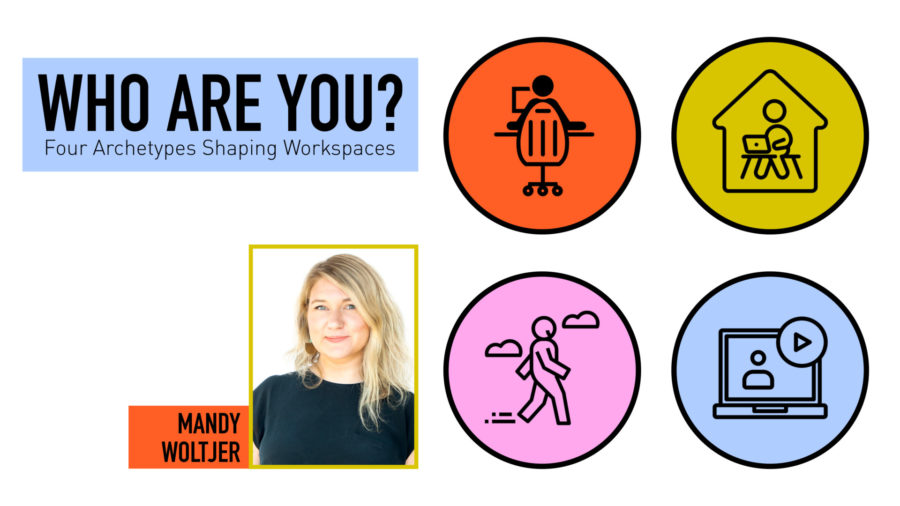Insights
Oct 19, 2022 _ insights
Who Are You? Four Archetypes Shaping Workspaces
There’s nothing worse than an elegant solution to the wrong problem. The new lifestyle of work requires new thinking about the locations where people work, what their workflow looks like, and how they are performing their best work. Whether you’re undertaking an office refresh or a comprehensive renovation, uncovering who you are as an organization is at the heart of understanding the kind of spaces your organization needs.
Uncovering Truths
 Uncovering who you are begins with listening, observing, and fact-finding. Fresh eyes and ears during this process can reveal surprising truths about what your employees need to do their best work and feel valued. Even the most tuned-in leadership doesn’t always have access to feelings and insights that employees share with each other. Tapping into their wisdom and wishes can help leadership make smart decisions about where to invest design dollars. Do you need more open collaboration space? A more welcoming place to eat? Spaces to focus? You won’t know until you look within and discover who you are and what you really need.
Uncovering who you are begins with listening, observing, and fact-finding. Fresh eyes and ears during this process can reveal surprising truths about what your employees need to do their best work and feel valued. Even the most tuned-in leadership doesn’t always have access to feelings and insights that employees share with each other. Tapping into their wisdom and wishes can help leadership make smart decisions about where to invest design dollars. Do you need more open collaboration space? A more welcoming place to eat? Spaces to focus? You won’t know until you look within and discover who you are and what you really need.
Building Personas
Once you uncover who you are, you can begin to ask essential questions like: Where are you physically working and how often? What does your workflow typically look like? How fixed or mobile is your work? Evaluating lifestyle and workflow through persona categories allows you to move away from a universal, one-size-fits-all approach and shape space specifically around your people. This creates a landscape of choice that provides a range of spatial opportunities to support productivity. Many organizations find their work styles fall into four categories:
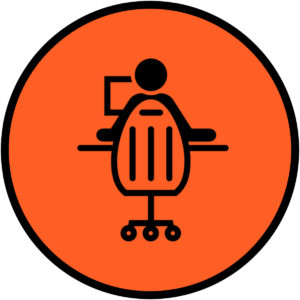 Dwellers primarily work in the office, but don’t necessarily want to be bound to their desk all day. Some tasks require focus, others can be done in a more social environment. They want to choose from a range of postures that support an array of tasks (collaborative and focus areas) as well as access destinations that support their health and wellness throughout the day (like outdoor space). Dwellers want to feel their range of needs is supported in one place.
Dwellers primarily work in the office, but don’t necessarily want to be bound to their desk all day. Some tasks require focus, others can be done in a more social environment. They want to choose from a range of postures that support an array of tasks (collaborative and focus areas) as well as access destinations that support their health and wellness throughout the day (like outdoor space). Dwellers want to feel their range of needs is supported in one place.
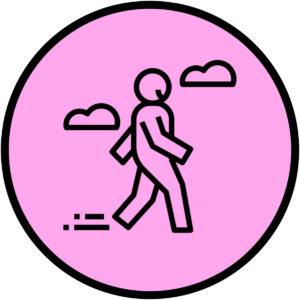 Nomads come and go. They may work in the office in the morning, then be in and out of off-site meetings in the afternoon. Nomads may need a convenient touch-down hub to connect with colleagues or catch up between meetings.
Nomads come and go. They may work in the office in the morning, then be in and out of off-site meetings in the afternoon. Nomads may need a convenient touch-down hub to connect with colleagues or catch up between meetings.
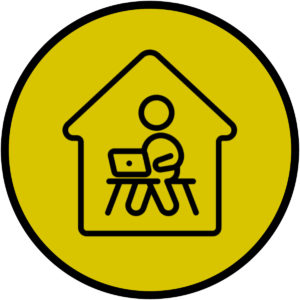 Hybrids spend some days of the week in the office and some days working remotely. They may like the social and community building aspects of collaborative work, but also crave the extended focus time or work-life balance that comes with a few remote days.
Hybrids spend some days of the week in the office and some days working remotely. They may like the social and community building aspects of collaborative work, but also crave the extended focus time or work-life balance that comes with a few remote days.
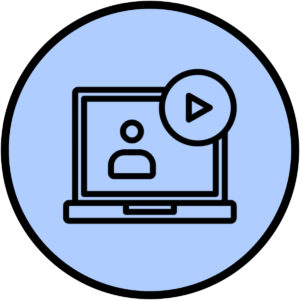 Remotes work off-site most of the time. Remote workers may provide specialized skills that can only be found outside the region of your organization, or the type of work they do doesn’t require a lot of in-person interaction. But remotes still want to connect equitably, so workplace meeting spaces need the appropriate technology to engage team collaborators digitally.
Remotes work off-site most of the time. Remote workers may provide specialized skills that can only be found outside the region of your organization, or the type of work they do doesn’t require a lot of in-person interaction. But remotes still want to connect equitably, so workplace meeting spaces need the appropriate technology to engage team collaborators digitally.
The Landscape of Activity
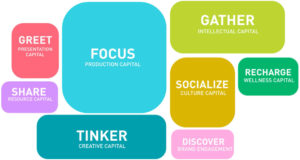
When Remotes and Dwellers need to interact, where should that happen? What technology needs to be present? Which days are most popular in-office days for your Hybrids? Are there enough spots for everyone to have a spot? Do they need the same spot every time? Where can your Nomads touch down for an hour between meetings? Are you hosting big team project kick off meetings with visitors? How often and where is that happening? If you’ve done the “inner” work of uncovering who you are as an organization, your workstyle personas, and what your goals are, creating a landscape of activity that right-sizes your needs begin to take shape.
Anticipating Change
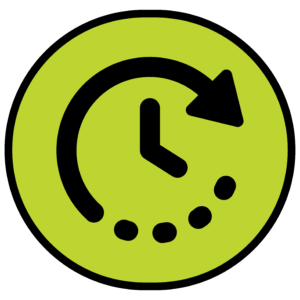 You can’t predict the future, but you can prepare for change. Flexibility and adaptability are design pillars that help keep organizations agile. The percentage of employees working remotely may shift in the coming years; tools and technologies are constantly evolving. Workspaces that can expand and contract, like open collaboration spaces, make it easy for additional people to come into the conversation. Flexible wall systems make conference rooms comfortable for different sized groups or let rooms be easily reconfigured as your company grows. Reconsidering how you store little-used physical documents can create opportunities for people to collaborate in-person. Flexible design strategies will help you nimbly adapt to inevitable changes as new generations enter the world of work.
You can’t predict the future, but you can prepare for change. Flexibility and adaptability are design pillars that help keep organizations agile. The percentage of employees working remotely may shift in the coming years; tools and technologies are constantly evolving. Workspaces that can expand and contract, like open collaboration spaces, make it easy for additional people to come into the conversation. Flexible wall systems make conference rooms comfortable for different sized groups or let rooms be easily reconfigured as your company grows. Reconsidering how you store little-used physical documents can create opportunities for people to collaborate in-person. Flexible design strategies will help you nimbly adapt to inevitable changes as new generations enter the world of work.
 Mandy Woltjer is an Associate at GBBN. Drawn to creative problem solving, research, and analytics, Mandy helps clients anticipate their futures and demonstrates how design can get them there. Her process—which includes focus groups, observations, and careful listening—serves to surface underlying issues and potential solutions. Her workplace projects include Digital Futures, ByteDance, and The Pop District HQ in Pittsburgh.
Mandy Woltjer is an Associate at GBBN. Drawn to creative problem solving, research, and analytics, Mandy helps clients anticipate their futures and demonstrates how design can get them there. Her process—which includes focus groups, observations, and careful listening—serves to surface underlying issues and potential solutions. Her workplace projects include Digital Futures, ByteDance, and The Pop District HQ in Pittsburgh.
